Overview
Injection molding is a widely employed manufacturing process, particularly in the plastics industry, where intricate and precise parts are produced. At the heart of this process lies the precise control of temperature, a critical factor that ensures the quality and integrity of the molded parts. Achieving and maintaining the optimal temperature is made possible through the use of various types of heaters. In this overview, we’ll introduce you to the different types of heaters utilized in injection molding and their significance in the manufacturing landscape.
Introduction to Heaters Used In Injection Molding
Injection molding is a highly versatile and widely used manufacturing process for creating a vast array of plastic parts and components. Central to the success of this process is the precise control of temperature. Heaters play a pivotal role in achieving and maintaining the necessary temperatures throughout the various stages of injection molding. In this introduction, we will explore the fundamental role of heaters in injection molding and provide an overview of the types of heaters commonly used in this crucial manufacturing process.

The Significance of Temperature Control in Injection Molding
Injection molding is a sophisticated manufacturing method that involves melting thermoplastic materials, injecting them into molds, and allowing them to cool and solidify to form the desired shapes. Temperature control is paramount at multiple stages of this process –
- Material Melting: To create the molten plastic material required for injection, raw plastic pellets or granules must be heated to their specific melting points.
- Injection: The molten material is injected into the mold cavity under high pressure, ensuring it takes the precise shape of the mold.
- Cooling: After injection, the mold must be appropriately cooled to solidify the plastic, allowing for easy part removal.
- Maintaining Mold Temperature: Precise control of mold temperature is critical to achieving uniform part quality. It prevents issues like warping and stress in the final product.
The Role of Heaters in Injection Molding
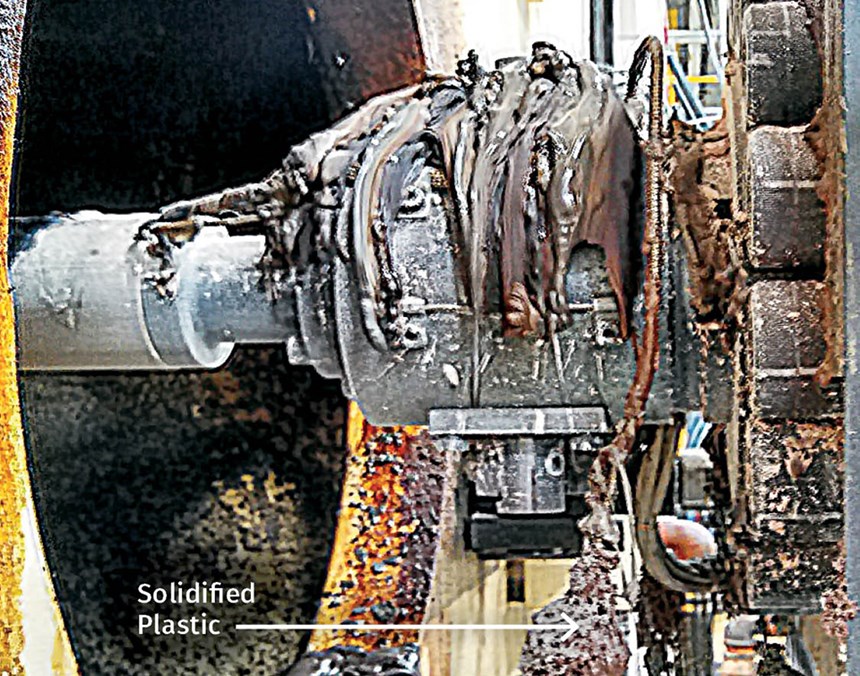
Heaters in injection molding serve several crucial functions –
- Melting the Material: The plastic material, usually in the form of pellets or granules, needs to be heated to its specific melting point for injection into the mold. This is typically achieved through barrel heaters.
- Maintaining Mold Temperature: Precise mold temperature control is essential to ensure proper part quality. Mold heaters, such as cartridge heaters, electric platen heaters, and hot runner systems, are used to regulate mold temperature.
- Nozzle Heating: To prevent premature cooling and solidification of the material, nozzle heaters ensure that the plastic remains at the correct temperature as it enters the mold cavity.
- Hydraulic Systems: Injection molding machines often incorporate hydraulic systems, and oil heaters are used to maintain consistent hydraulic oil temperature, ensuring smooth machine operation.
- Specific Component Heating: Some specialized molding processes require the precise and rapid heating of specific components or inserts within the mold. Induction heaters are often employed for such applications.
Different Types of Heaters in Injection Molding
Let’s delve into the details of the various types of heaters used in injection molding and their functions –
Band Heaters
- Function: Band heaters are a crucial component in injection molding machines. They encircle the barrel of the machine, where the plastic material is fed and heated to its melting point.
- Key Features: These heaters provide uniform and efficient heating to the barrel, ensuring that the plastic material maintains a consistent temperature for proper molding. They are available in various sizes and configurations to accommodate different barrel sizes and shapes.
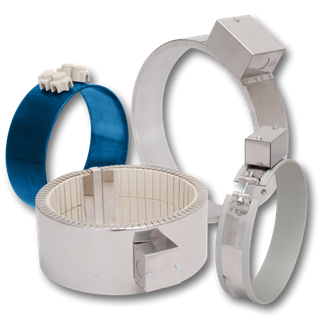
Nozzle Heaters
- Function: Nozzle heaters are designed to heat the nozzle of the injection molding machine. The nozzle is the part through which the molten plastic material is injected into the mold.
- Key Features: Maintaining the correct temperature in the nozzle is essential to ensure that the plastic material flows smoothly and consistently into the mold cavity. Nozzle heaters prevent premature cooling and solidification of the material, reducing the risk of defects in the molded parts.
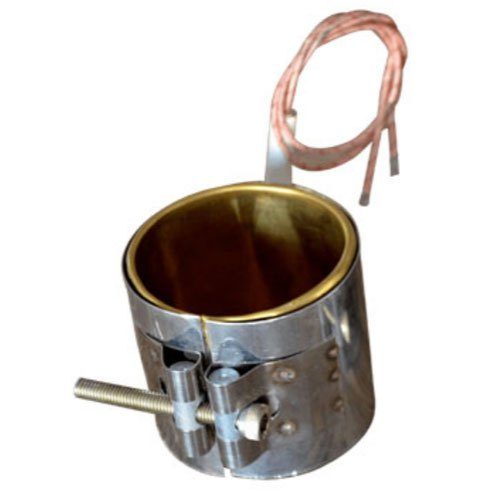
Cartridge Heaters
- Function: Cartridge heaters are inserted into holes or bores within the mold. They provide localized heating to specific areas of the mold, such as the core or cavity.
- Key Features: These heaters are known for their rapid heating capabilities and precise temperature control. They are invaluable in applications where maintaining a specific temperature in critical mold areas is crucial for producing high-quality parts.
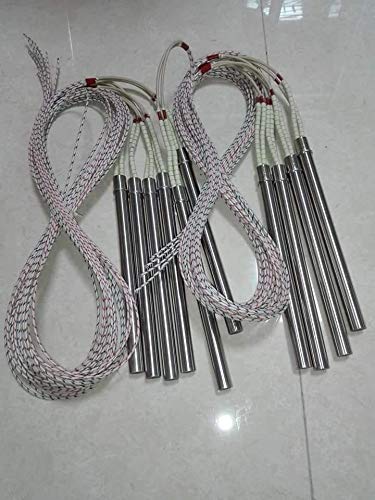
Hot Runner Systems
- Function: Hot runner systems are an advanced form of injection molding heating. They consist of a network of heated channels or manifolds integrated into the mold.
- Key Features: Hot runner systems eliminate the need for runners or sprues in the mold, as they keep the plastic material in a molten state throughout the process. This results in reduced material waste, faster cycle times, and improved part quality.

Oil Heaters
- Function: Oil heaters are used to heat the hydraulic oil in the injection molding machine’s hydraulic system.
- Key Features: Properly heated hydraulic oil ensures the hydraulic components operate efficiently, reducing friction, wear, and potential malfunctions. Maintaining consistent viscosity in the oil is critical for the machine’s overall performance and longevity.
Electric Platen Heaters
- Function: Electric platen heaters are integrated into the platens of the injection molding machine. They heat the mold itself to ensure even heat distribution during the molding process.
- Key Features: These heaters play a vital role in preventing thermal variations within the mold, which can result in inconsistent part quality and potential defects. Even heating ensures uniform part characteristics.

Induction Heaters
- Function: Induction heaters are employed for specific mold components, such as inserts or cores, that require rapid and precise heating.
- Key Features: Induction heating relies on electromagnetic induction to heat the selected components quickly and efficiently. It is often utilized in specialized molding processes where fast and precise heating is essential.
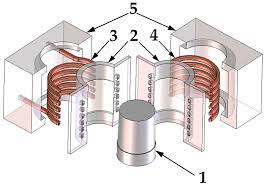
Resistance Heaters
- Function: Resistance heaters are used in various components of the injection molding machine, including the barrel, nozzle, and mold.
- Key Features: These heaters generate heat through electrical resistance and are favored for their reliability, ease of control, and ability to maintain consistent temperatures in critical parts of the machine.
Steam Heaters
- Function: Steam heaters are used in certain injection molding applications, particularly for heating molds. Steam circulates through channels within the mold to provide precise and uniform heating.
- Key Features: Steam heating can be energy-efficient and allows for tight control over temperature. It is suitable for molding processes where maintaining specific mold temperatures is critical for part quality.
Manufacturers and Suppliers of Heater Used in Injection Molding
Here are 10 well-known manufacturers and suppliers in India of heaters used in injection molding, described briefly –
- Elmec Heaters and Controllers:
- Overview: Elmec is a leading manufacturer of heating elements, offering a wide range of heaters for injection molding applications in India.
- Heatbird Heating Elements:
- Overview: Heatbird specializes in industrial heating solutions, including cartridge heaters and band heaters, widely used in the Indian injection molding industry.
- Shiva Heater:
- Overview: Shiva Heater is a trusted supplier of heaters, including nozzle heaters and band heaters, catering to the needs of the Indian injection molding sector.
- SHE Transheat Engineers:
- Overview: SHE Transheat Engineers provides electric heaters and thermal systems, including custom solutions, for injection molding in India.
- KERONE:
- Overview: KERONE offers a variety of heating solutions, including immersion heaters and cartridge heaters, for injection molding applications in India.
- MICRO Electric Corporation:
- Overview: MICRO Electric Corporation specializes in electric heating elements and controls, serving the injection molding industry in India.
- India Heater Co.:
- Overview: India Heater Co. manufactures a range of heating elements, including immersion heaters and hot runner heaters, for injection molding processes.
- Twin Tech India Pvt. Ltd.:
- Overview: Twin Tech India provides hot runner systems and associated heaters, catering to the needs of injection molding companies in India.
- Mihir Enterprises:
- Overview: Mihir Enterprises is a supplier of electric heaters, including nozzle heaters and cartridge heaters, used in injection molding across India.
- SHB Enterprise:
- Overview: SHB Enterprise offers heating solutions, such as band heaters and immersion heaters, tailored to the requirements of injection molding in India.
Applications of Heater Used in Injection Molding
Different types of heaters used in injection molds find applications across various industries and molding processes. Here are some common applications for each type of heater:
Band Heaters
- Application: Barrel Heating
- Description: Band heaters are wrapped around the barrel of the injection molding machine.
- Usage: Commonly used in all types of injection molding processes to melt and maintain the plastic material at the required temperature for injection.
Nozzle Heaters
- Application: Nozzle Heating
- Description: Nozzle heaters are installed on the injection molding machine’s nozzle.
- Usage: Ensures that the plastic material remains at the correct temperature as it is transferred from the barrel to the mold, preventing premature cooling and maintaining proper flow.
Cartridge Heaters
- Application: Mold Heating, Specific Mold Areas
- Description: Cartridge heaters are inserted into holes or bores within the mold.
- Usage: Provides localized heating to specific areas of the mold, ensuring precise temperature control and consistent part quality.
Hot Runner Systems
- Application: Mold Heating (Advanced)
- Description: Hot runner systems consist of heated channels within the mold itself.
- Usage: Eliminates the need for runners or sprues, ensuring consistent material flow and reducing material waste. Ideal for high-precision molding.
Oil Heaters
- Application: Hydraulic System Heating
- Description: Oil heaters are used to maintain the temperature of hydraulic oil in the injection molding machine’s hydraulic system.
- Usage: Ensures smooth and efficient machine operation by maintaining consistent hydraulic oil viscosity.
Electric Platen Heaters
- Application: Mold Heating
- Description: Electric platen heaters are integrated into the platens of the injection molding machine.
- Usage: Provides even and controlled heating to the mold, preventing thermal variations within the mold and ensuring uniform part quality.
Induction Heaters
- Application: Specific Mold Components or Inserts
- Description: Induction heaters use electromagnetic induction to rapidly heat specific mold components or inserts.
- Usage: Ideal for specialized molding processes that require rapid and precise heating of specific components within the mold.
Resistance Heaters
- Application: Various Components (Barrel, Nozzle, Mold)
- Description: Resistance heaters generate heat through electrical resistance.
- Usage: Versatile heaters are used in different components of the injection molding machine, providing reliable and controlled heating.
These heaters cater to a wide range of molding applications, from basic plastic part production to high-precision, specialized molding processes. Their adaptability and ability to maintain precise temperatures make them essential components in modern injection molding operations across industries such as automotive, electronics, medical devices, and consumer goods.
Pros & Cons of Heaters Used in Injection Molding

Let’s outline the pros and cons of heaters used in injection molds in a step-by-step, concise format –
Pros of Heaters Used in Injection Molds
- Precise Temperature Control:
- Pro: Heaters enable precise control of temperatures during the injection molding process, ensuring consistent part quality.
- Enhanced Material Flow:
- Pro: Properly heated material flows more smoothly, reducing the risk of defects like voids or incomplete fills.
- Reduced Cooling Time:
- Pro: Heaters help maintain optimal mold temperatures, reducing cooling time and improving production efficiency.
- Minimized Warping and Stress:
- Pro: Controlled heating prevents warping and stress in molded parts, resulting in higher-quality products.
- Energy Efficiency:
- Pro: Some heaters, like hot runner systems, can be energy-efficient by eliminating the need for runners, and reducing material waste.
- Customizable Heating Zones:
- Pro: Various heater types allow for the customization of heating zones in the mold, optimizing temperature profiles.
Cons of Heaters Used in Injection Molds
- Initial Investment:
- Con: Heaters and associated systems can add to the initial cost of an injection molding setup.
- Maintenance Requirements:
- Con: Heaters require regular maintenance to ensure they function correctly, adding to operational costs.
- Energy Consumption:
- Con: Heaters can consume significant energy, particularly in larger-scale molding operations.
- Complexity:
- Con: Some advanced heating systems, like hot runner systems, can be complex to set up and maintain.
- Compatibility Issues:
- Con: Ensuring compatibility between different heater types and injection molding machines can be challenging.
- Risk of Overheating:
- Con: Inadequate temperature control can lead to material degradation or overheating, causing mold and equipment damage.
Conclusion
In the world of injection molding, the precise control of temperature is paramount to achieving high-quality, defect-free parts. The various types of heaters discussed here play vital roles in ensuring that temperature is maintained at every stage of the process, from melting the material to cooling and ejecting the final molded part. The selection of the appropriate heater type depends on the specific requirements of the molding process, making them indispensable tools in modern manufacturing.
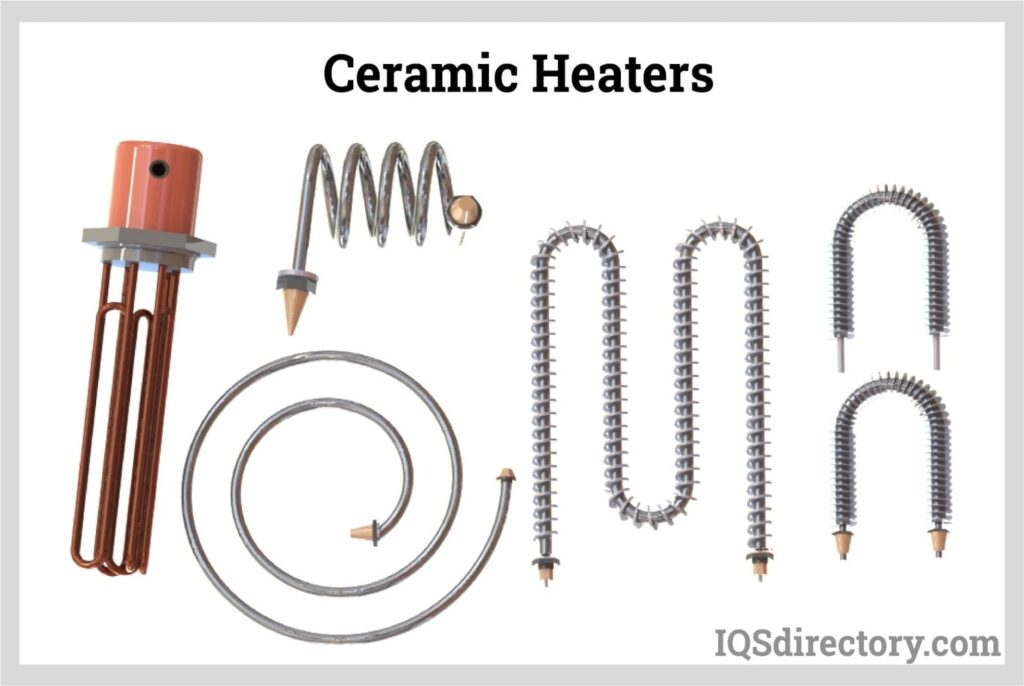
FAQ’s
What are the benefits of Heaters?
Heaters, whether used in industrial applications like injection molding or for residential and commercial heating, offer several benefits.
Temperature Control: Heaters allow precise control of temperature, ensuring that processes or environments are maintained at the desired level.
Comfort: In homes and offices, heaters provide warmth during cold weather, enhancing comfort and well-being.
Energy Efficiency: Modern heaters are designed to be energy-efficient, reducing energy consumption and costs.
Process Control: In industrial settings, heaters are crucial for maintaining consistent temperatures in processes, leading to better quality and efficiency.
Reduced Moisture: Heaters can help reduce humidity, preventing mold growth and protecting equipment and materials.
Quick Heating: Many heaters, such as electric heaters, provide rapid heating, increasing efficiency and reducing wait times.
Customization: Heaters come in various types and sizes, allowing users to choose the most suitable heating solution for their specific needs.
Cost-Effective: Properly maintained heaters have a long lifespan, making them a cost-effective heating solution over time.
Improved Product Quality: In manufacturing, precise heating can improve the quality of products and reduce defects.
Environmental Benefits: Some heaters, like energy-efficient electric heaters, have a lower environmental impact, contributing to sustainability efforts.
Safety: Many heaters incorporate safety features to prevent overheating or electrical issues, ensuring user safety.
Versatility: Heaters are used in a wide range of applications, from residential heating to industrial processes, showcasing their versatility.
Reduced Downtime: In industrial settings, reliable heaters help minimize downtime and maintain consistent production.
Consistency: Properly functioning heaters ensure consistent temperatures, leading to consistent results in processes or heating environments.
Customized Control: Advanced heaters often come with control systems that allow users to set and adjust temperature parameters as needed.
In summary, heaters offer numerous benefits, including temperature control, comfort, energy efficiency, and improved processes in both residential and industrial applications. The choice of heater depends on the specific requirements of the application, but the advantages they provide are consistently valuable.
What is the purpose of a Heater?
The purpose of a heater is to generate and provide controlled heat to achieve various objectives in different applications. Heaters are designed to raise the temperature of an environment or a substance to a desired level. Here are some common purposes of heaters –
Comfort Heating: Heaters are used in homes, offices, and commercial spaces to provide warmth and maintain comfortable indoor temperatures during cold weather.
Process Heating: In industrial settings, heaters are employed to heat materials or substances for specific manufacturing processes, such as melting plastic in injection molding or curing coatings in painting.
Hot Water Production: Water heaters are used to heat water for domestic use, including bathing, cooking, and cleaning.
Space Heating: Heaters are used in workshops, garages, and warehouses to maintain suitable temperatures for work and storage.
Drying: Heaters are used to remove moisture from materials or products, such as in drying ovens for food processing or drying clothes in a dryer.
Temperature Control: Heaters play a crucial role in maintaining consistent temperatures in various applications, from maintaining proper fermentation temperatures in brewing to controlling the temperature in greenhouses.
Comfort in Vehicles: Heaters in vehicles, such as cars and trucks, ensure occupants remain comfortable during cold weather by heating the interior.
Industrial Processes: In manufacturing, heaters are essential for processes like metal forging, plastic molding, and glass production.
Preventing Freezing: Heaters are used to prevent freezing in pipes, tanks, and equipment in cold environments.
Scientific and Laboratory Applications: Heaters are employed in laboratories and research facilities for precise temperature control in experiments and tests.
Safety: Heaters can be used to prevent the freezing of critical equipment, such as outdoor surveillance cameras and airport runways, to enhance safety.
Process Control: In chemical and pharmaceutical industries, heaters are integral for controlling reaction temperatures during chemical processes.
Food Preparation: Heaters are used in cooking appliances like ovens, stovetops, and grills for food preparation.
Environmental Control: Heaters are employed in environmental chambers for testing materials and products under controlled temperature conditions.
Deicing: Heaters are used to melt ice and snow on surfaces, such as roads, sidewalks, and aircraft wings, to ensure safe travel and operations.
What types of Heaters are used in Injection Molding Machine?
Injection molding machines utilize various types of heaters to achieve precise temperature control during the molding process. The types of heaters commonly used in injection molding machines include –
Band Heaters:
Description: Band heaters are cylindrical or rectangular heaters that encircle the barrel of the injection molding machine. They are clamped in place and provide uniform heating to the barrel.
Application: Band heaters are primarily used for heating the barrel to melt the plastic material.
Nozzle Heaters:
Description: Nozzle heaters are small heaters designed to fit around the nozzle of the injection molding machine. They are typically wrapped tightly around the nozzle to ensure even heating.
Application: Nozzle heaters are used to maintain the temperature of the nozzle, preventing premature cooling of the molten plastic material.
Cartridge Heaters:
Description: Cartridge heaters are cylindrical heaters inserted into holes or bores in the mold. They are often used to provide localized heating to specific areas of the mold, such as the core or cavity.
Application: Cartridge heaters are employed to maintain precise mold temperatures, ensuring consistent part quality.
Hot Runner Heaters:
Description: Hot runner systems consist of heated channels or manifolds integrated into the mold. These channels keep the plastic material in a molten state and eliminate the need for runners or sprues.
Application: Hot runner heaters are used to ensure consistent material flow within the mold, reducing material waste and improving efficiency.
How is Injection Mold heated?
Injection molds are heated using various types of heaters and heating elements to precisely control the temperature of the mold during the injection molding process. Here is a general overview of how injection molds are heated –
Heating Elements: Injection molds are equipped with heating elements or heaters designed for thermal control. These heaters are strategically placed within the mold to heat specific areas as needed.
Cartridge Heaters: Cartridge heaters are commonly used in injection molds. They are inserted into holes or bores drilled into the mold, providing localized heating to critical areas, such as the core or cavity.
Electric Platen Heaters: In some cases, electric Platen heaters are integrated into the mold’s platens. These heaters provide even and controlled heating to the entire mold.
Hot Runner Systems: Advanced molds may incorporate hot runner systems, which consist of heated channels or manifolds integrated into the mold itself. These channels keep the plastic material in a molten state as it flows into the mold cavity, eliminating the need for runners or sprues.
Temperature Control: Temperature control systems, often equipped with sensors and controllers, are used to monitor and adjust the temperature of the mold. These systems ensure that the mold reaches and maintains the precise temperature required for the specific material being used and the part being molded.
Zoning: Injection molds may have multiple heating zones, each controlled independently. This zoning allows for precise temperature control throughout the mold, accommodating variations in part geometry or material flow.
Insulation: To maintain consistent temperatures and prevent heat loss, molds may be insulated with materials such as thermal blankets or ceramic insulation.
Thermal Cycling: During the injection molding process, the mold goes through thermal cycling, which includes heating to the desired temperature, injection of molten material, and cooling to solidify the part. The heating elements and temperature control systems are crucial for maintaining the desired temperature profile during this cycle.
Cooling: After the part has solidified, the mold may also have cooling systems, such as water channels, to aid in the cooling process and facilitate the removal of the molded part.
The precise control of mold temperature is critical in injection molding to achieve high-quality and defect-free parts. Different materials and part geometries require specific temperature profiles, and the proper functioning of heating elements and temperature control systems is essential to the success of the molding process.
How do Heaters Work?
Heaters work by converting electrical energy or another energy source into heat energy, which is then transferred to the surrounding environment or material to raise its temperature. The specific working principle of a heater depends on its type and design, but here’s a general overview of how heaters work –
Energy Conversion: Heaters are equipped with elements that are capable of converting one form of energy into heat. The most common energy sources for heaters include electricity, natural gas, oil, or even steam.
Heating Element: The heating element is the core component of a heater responsible for generating heat. Depending on the type of heater, the heating element can take various forms, such as electrical resistors, coils, burners, or heating chambers.
Energy Supply: For electric heaters, the heating element is connected to an electrical power source. When the heater is turned on, electrical current flows through the heating element, causing it to heat up due to the resistance it offers to the flow of electricity. In the case of gas or oil heaters, these fuels are combusted in burners, generating heat.
Heat Transfer: Once the heating element is energized, it begins to produce heat. This heat energy is transferred to the surrounding air, water, or material through conduction, convection, or radiation, depending on the design of the heater.
Conduction: Heat is transferred through direct contact between the heating element and the material being heated. This is common in electric heaters with heating coils or elements in direct contact with a surface.
Convection: In convection heating, air or fluid is heated by the heating element, causing it to rise and circulate. This is often seen in forced-air heating systems or in water heaters.
Radiation: Some heaters emit infrared radiation, which heats objects or surfaces in their line of sight. This is prevalent in radiant heaters.
Temperature Control: Many heaters are equipped with temperature control mechanisms, such as thermostats or electronic controllers, to maintain the desired temperature. These devices monitor the current temperature and adjust the heat output of the heater accordingly.
Output Regulation: Heaters can typically be adjusted to produce more or less heat, allowing users to control the temperature to suit their needs.
Safety Features: Modern heaters often include safety features like automatic shutoff mechanisms in case of overheating, flame failure detection in gas heaters, and thermal cutoff switches.
Heat Distribution: The heater distributes heat throughout the space or material, raising its temperature until the desired level is reached.

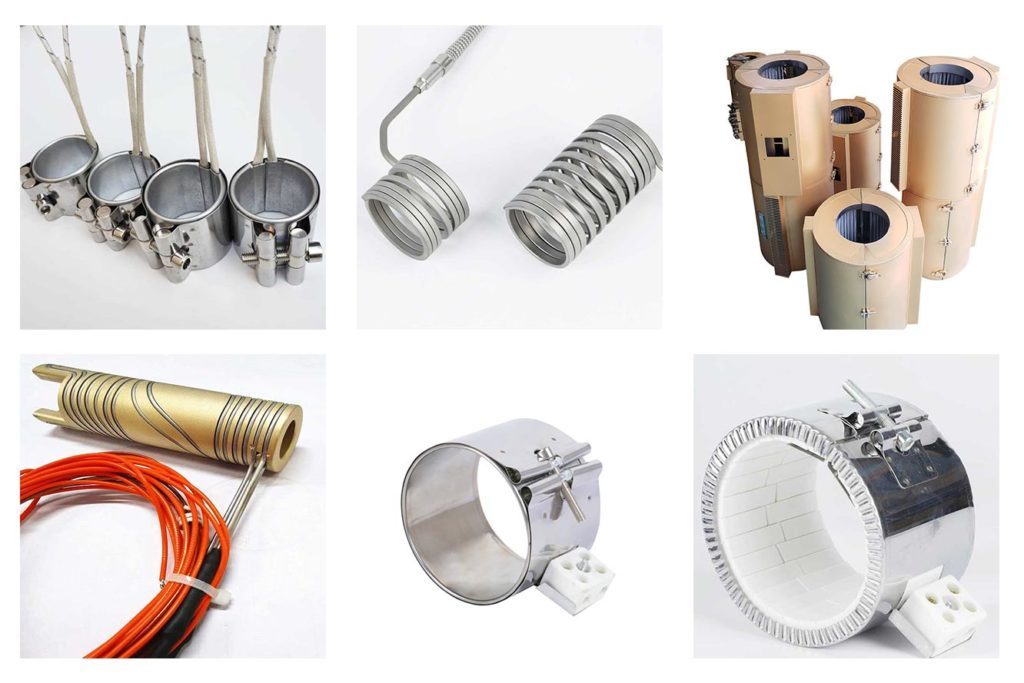
Ahaa, é uma boa diálogo sobre deste parágrafo neste lugar neste
blog, eu li tudo isso, então agora eu também estou comentando neste lugar.
Glad you enjoyed the dialogue! I’m happy that you read everything and are now participating with your comment. It’s always great to see others engaging here
I loved up to you will obtain performed right here. The comic strip is attractive, your authored material stylish. however, you command get bought an nervousness over that you want be delivering the following. in poor health indubitably come further beforehand again since exactly the similar just about a lot often inside of case you protect this increase.